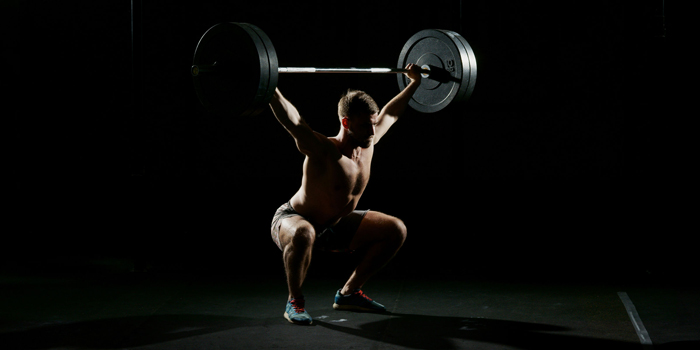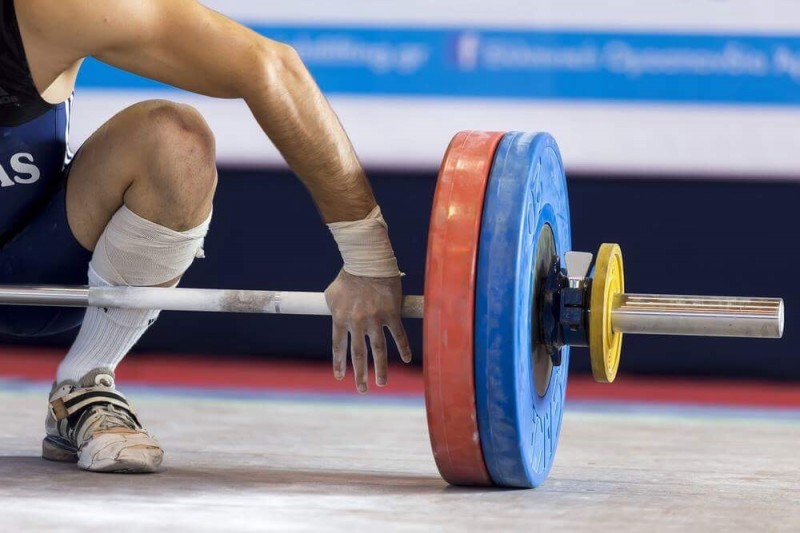
Today more than ever, Olympic-style weightlifting exercises are part of both in-season and off-season high school and collegiate strength and conditioning programs. It is no surprise that 20-year-old football players can power clean almost twice their bodyweight, sprint 40 yards in less than 4.3 seconds, or jump more than 44 inches from the ground. Remarkable numbers if we consider how, no more than 20 years ago when The New York Time interviewed Meg Ritchie, football players hardly knew how to clean.
"My job is to make you as strong as I am," claimed Miss Ritchie, the first female strength and conditioning coach in the history of the NCAA. Former shot-putter and discus thrower from Scotland, the seven-time national champion Meg Ritchie was able to power clean 350 pounds at 215 bodyweight — a record that only a handful of her players at the Arizona State University were ever able to equal. Once again, this no surprise, considering how elite track and field athletes in Europe have been snatching, cleaning, and jerking since the early 70s.
RELATED: Olympic Weightlifting for Strongman Athletes
Olympic-style weightlifting exercises (snatch, clean and jerk, and their many derivatives such as pulls and extensions) have been shown to improve performance in sport by increasing the amount of force an athlete can generate against the ground. Activities involving running, sprinting, jumping, changing direction, throwing, and lifting—yes, lifting, as weightlifting itself is a sport like any other sport—heavily rely on the ability to "push off the ground”1. Performance in Olympic-style weightlifting exercises has shown a strong positive correlation with speed (both linear and change of direction speed), power, and agility across a wide variety of athletes, from teenagers up to the elite level2. Snatch, clean, and the jerk can, as a matter of fact, be considered the most athletic-like movements able to be performed outside the sport arena.
Despite the numerous similarities between full lifts, pulls, and extensions, the kinematic profile associated with different variations of Olympic-style weightlifting exercises allows for a more rational, sport-by-sport selection of these movements based on specificity. The theoretical model proposed by Dr. T.J. Suchomel and colleagues from Carroll University provides a useful guideline to select Olympic-style exercises for different athletes along the force-velocity continuum3.
Image Credit: Ververidis Vasilis
For instance, athletes competing in speed-strength events such as track and field and the vast majority of field and court sports should incorporate in their training routine full snatches, pulls, and power snatches from the ground and from the power position (hang snatch). The higher peak bar velocity achieved during these movements (up to two meters per second faster than any other traditional strength training exercise) seems to better fit the needs of athletes competing in sports where speed—specifically linear speed and change of direction—and quickness play major roles.
Athletes competing in strength-speed events such as throwers, sprinters, jumpers, wrestlers, and any other discipline involving physical contact (offensive and defensive linemen in football and forwards in rugby, to name a few), on the other hand, should incorporate in their training routine clean and jerks, extensions, and power clean and jerks from the ground and from the power position (hang clean and jerk). These movements require a higher amount of “brute strength” (a quote from Dr. Dan Baker) in order to be performed and therefore seem to meet the needs of power-oriented athletes.
As we know, performance on the field and on the court of play depends on the ability to run faster, jump higher, and react quicker than the opponent. In order to maximize power, Olympic-style weightlifting exercises such as the snatch, the clean, and the jerk are performed year-round with relatively lighter weights, ranging from 75% to 85% of 1RM4. Approximately 35% to 45% of the training volume is spent within this range in the effort to develop strength-speed, the most athletic-like manifestation of absolute strength. A relatively higher percentage of volume (roughly 20%) is spent during the season with weight close to 80% of 1RM, performing three to four sets of two to four repetitions per exercise.
MORE: Training Triple Extension — Olympic Lifting Variations and Substitutions
During the season, 15% to 25% of the training volume is spent at intensity ranging from 65% to 75% of 1RM. This is the optimal target zone to develop and maintain speed-strength. Exercises are performed in four to six sets of three to five repetitions each. Absolute strength—and even more so relative strength—only takes about 10% to 15% of the remaining volume of training at intensity above 85% of 1RM. During the off-season, three to five sets of one to three repetitions per exercise are normally performed with weights higher than 90% of 1RM.
These recommendations are based on one of the most popular and referenced weightlifting manual ever published: Managing the Training of Weightlifters by Nikolai Petrovich Laputin and Valentin Girgoryevich Oleshko. Although this model was originally designed and developed for Olympic weightlifters, evidence has been collected over the last decade to provide a rational understanding of the intimate relationship between load (F, force) and speed (v, velocity) in resistance training, with a significant amount of research done specifically on Olympic-style weightlifting exercises.
Evidence in the most recent academic literature clearly demonstrates the superiority of high-speed strength training (training speed in the presence of strength, to paraphrase Dr. Yuri Verkhoshansky in the book Special Strength Training: Manual for Coaches, 2011) in developing stronger and more powerful athletes5,6. High school and collegiate athletes today spend a higher percentage of the yearly training volume at a relative intensity between 65% and 85% of 1RM, whereas only a small amount of work is done above this threshold. This is a significant change from a tendency that, only a few decades ago, considered absolute strength (training at 85% 1RM or above) the only physical attribute capable of making the difference among elite athletes.
Studies have been done to compare NCAA athletes' physical performance across the last 30 years. Young male and female athletes today are more powerful, relatively lighter, faster, and significantly stronger pound-for-pound than they were 20, 15 and 10 years ago. Evidence in the literature suggests that young elite athletes with long-term training experience should be able to clean and jerk 1.3 to 1.6 times their body weight and snatch 1.1 to 1.3 times their body weight by the age of 186. Although these numbers might seem excessive, based on the evidence collected, these goals appear to be quite realistic indeed.
By teaching young athletes how to snatch, clean, and jerk, it is possible to provide them the necessary skills to improve performance on the field and on the court of play. As strength improves, so does the ability to sprint faster, jump higher, and lift heavier weights overhead. It is a trend that continues among professional athletes that by implementing Olympic-style weightlifting exercises alongside squat (and its many variations), presses, pulls, and plyometric drills in a year-round, well-rounded strength and conditioning program, it is possible to develop faster, stronger and more powerful athletes than ever, prompting positive transfer of training between the weight room and the field of play.
References
- Hori, N., Newton, R. U., Nosaka, K., & Stone, M. H. (2005). Weightlifting Exercises Enhance Athletic Performance That Requires High-Load Speed Strength. Strength & Conditioning Journal, 27(4), 50-55.
- Hori, N., Newton, R. U., Andrews, W. A., Kawamori, N., McGuigan, M. R., & Nosaka, K. (2008). Does performance of hang power clean differentiate performance of jumping, sprinting, and changing of direction? The Journal of Strength & Conditioning Research, 22(2), 412-418.
- Suchomel, T. J., Comfort, P., & Lake, J. P. (2017). Enhancing the Force–Velocity Profile of Athletes Using Weightlifting Derivatives. Strength & Conditioning Journal, 39(1), 10
- Comfort, P., Allen, M., & Graham-Smith, P. (2011). Comparisons of peak ground reaction force and rate of force development during variations of the power clean. The Journal of Strength & Conditioning Research, 25(5), 1235-1239.
- Comfort, P., Mundy, P. D., Graham-Smith, P., Jones, P. A., Smith, L. C., & Lake, J. P. (2016). Comparison of peak power output during exercises with similar lower-limb kinematics. Journal of Trainology, 5(1), 1-5.
- Keiner, M., Sander, A., Wirth, K., Caruso, O., Immesberger, P., & Zawieja, M. (2013). Strength performance in youth: trainability of adolescents and children in the back and front squats. The Journal of Strength & Conditioning Research, 27(2), 357-362.
Header Image Credit: Dmitry Tsvetkov © 123RF.com
Antonio Squillante is the Director of Sports Performance and Training at Velocity Sports Performance, Los Angeles, California. He graduated summa cum laude from the University San Raffaele – Rome, Italy – with a Doctorate Degree in Exercise Science. Antonio has an unlimited interest in the field of sports biomechanics and long-term athletic development conducting academic research and presenting at national and international events as a member the International Society of Sports Biomechanics (ISBS) and the International Youth Conditioning Association (IYCA). He is a Certified Strength and Conditioning Specialist (NSCA-CSCS) and a member of the NSCA Advisory Board for the State of Pennsylvania and California. He is currently the Weightlifting Head Coach at California State University of Northridge (CSUN).











1 Comment